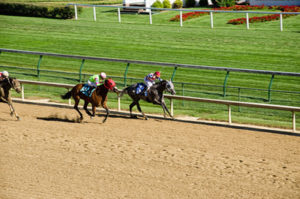 There are few sports quite as complex as horse racing. Each race is determined by an enormous number of factors. The thrill of racing as a spectator sport and from a betting perspective is trying to predict how those factors will combine on the day and how a race will pan out. The surface on which a race takes place is a massive variable and one that punters should be well aware of.
There are few sports quite as complex as horse racing. Each race is determined by an enormous number of factors. The thrill of racing as a spectator sport and from a betting perspective is trying to predict how those factors will combine on the day and how a race will pan out. The surface on which a race takes place is a massive variable and one that punters should be well aware of.
Different surfaces and different tracks can produce wildly different outcomes so understanding the variety of surfaces and how they operate is a must. In the guide below, we look in depth at the different racecourse surfaces used in Britain and beyond, and how the going on these can vary, and also at how all-weather racing has developed.
Quick Links: Turf – Synthetic – British All-Weather – Dirt
Turf
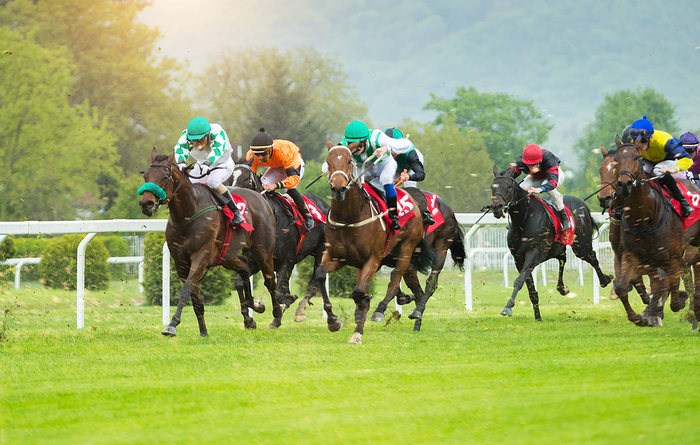
Racing on turf, by which we mean standard, natural grass, is the predominant type of racing seen in Britain, much of Europe and Australia. Famous races as varied as the Grand National, the Prix de l’Arc de Triomphe (held in Paris) and The Everest (Australia’s richest contest) take place on turf, as did the very first horse race in Britain, the Doncaster Cup.
Part of the joy of turf racing is the variety not just of the style of races and horses who compete but also the difference in the surfaces from course to course and even week to week. Some punters love the predictability and fairness of racing on synthetic courses but many racing fans love the questions posed by Flat and National Hunt racing that takes place on the turf.
Variety is the Spice of Life on the Turf
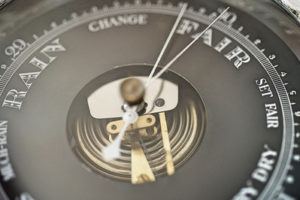 Turf is by far the most varied type of surface used for racetracks. That can be a real challenge as each course has its own characteristics and the nature of individual races can change considerably subject to the weather in the lead up.
Turf is by far the most varied type of surface used for racetracks. That can be a real challenge as each course has its own characteristics and the nature of individual races can change considerably subject to the weather in the lead up.
The problem with turf is that it requires a lot of upkeep, especially in hotter, drier climates. At the other end of the spectrum, it is often a serious challenge to get racing on in the wetter months in European countries. The UK and Ireland very much fall into this latter category, with fixtures lost to waterlogging every year. The benefit, however, is that the variety allows British racing to range from 5 furlong sprints on fast ground in summer to 4 mile slogs over fences in the depths of winter.
The Going

The going is a description of the condition of the course and is therefore one of the most important pieces of information in all racing on the turf. In order of ascending hardness and speed, the official descriptions of going in British racing are heavy, soft, good to soft (known as yielding in Ireland) good, good to firm and firm and hard. Additionally, courses can be given varying going readings at different parts of the course, for example, National Hunt racing courses are sometimes described as soft, heavy in places.
Traditionally, the clerk of the course would give a subjective going reading having walked the course, used their intimate knowledge of the ground and stuck the heel of their boots into various sections. That all changed in March 2007 when the GoingStick – the result of years of research and around £500,000 of investment – was introduced.
The use of the GoingStick is now mandatory at every British racecourse before every meeting to give the most accurate and objective information to everybody from jockeys and trainers to bookmakers and punters. However, subjectivity rules in a sport as complex as horse racing and you will sometimes hear two jockeys from the same race give different opinions on how the ground felt.
Horses are naturally suited to different types of ground subject to their size, build and running action. Clearly, there is a huge physical difference between a Grand National winner and a 2,000 Guineas animal but horses who compete even in the same sphere of racing can have very different preferences in terms of the going and this preference is often passed on genetically, adding a further layer to pre-race assessment and analysis.
More information on the going can be found here.
Variety Even in Races
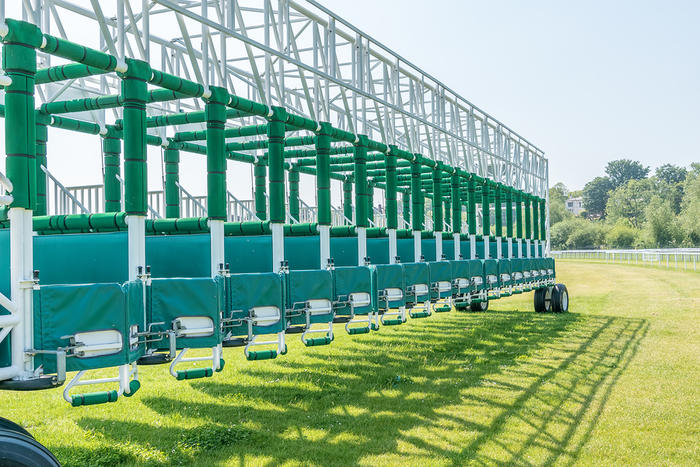
Turf is such a variable surface that fairness goes out of the window. How is it fair for a trainer and stable staff to put their heart and soul into preparing a horse for a big race only for the rain to come on the morning of a race and effectively end their chances of winning?
Moreover, unpredictability and the inherent unfairness of racing on turf happens with horses running in the same race. When watching a big field race on the Flat you will often see the horses split up into groups as the jockeys go in search of the best ground. Different sections of the track can drain differently, leaving one portion firmer, and therefore faster, than another. That is why the draw is so important in Flat racing, as horses who have the least lateral distance to travel to find the best of the ground have a real advantage on the competition.
Jockey Skill to the Fore
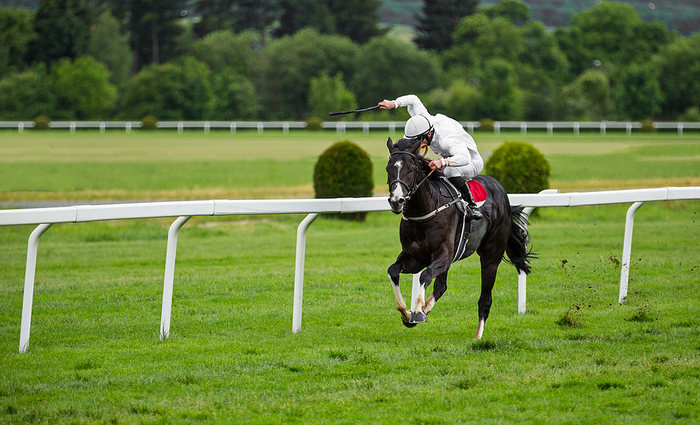
Turf is quite a forgiving surface for horses to run on. It is therefore generally considered to be safe and there are strict rules governing when tracks are either too firm or too soft for racing to safely take place.
The forgiving nature of turf courses makes them a real challenge of stamina, especially when the going is soft or worse. Horses cannot get out of the blocks and simply sprint at full pelt like they can on some synthetic surfaces. The challenge of stamina is a major part of horse racing on the Flat and over jumps and requires constant monitoring during races from the jockeys.
From steadying horses before jumps over towering fences at Cheltenham or Aintree to perfectly timing the final kick for home in a six-furlong sprint at Royal Ascot, racing on turf is seen by many as the ultimate test of horses and their riders.
Synthetic Surfaces
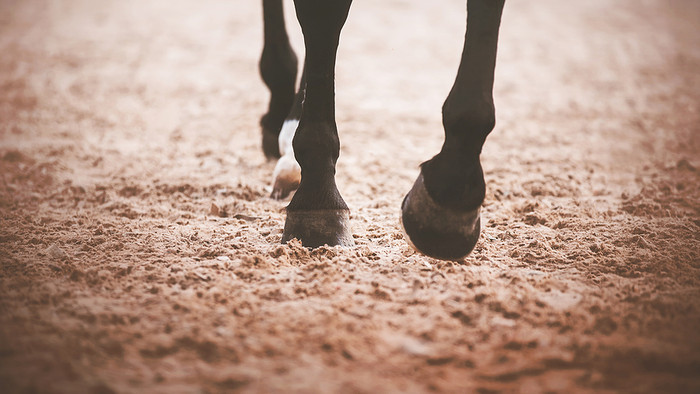
Racing on anything other than turf or dirt used to be frowned upon. It was variously thought that synthetic surfaces were a poor substitute for natural surfaces, unsafe or home only to second-rate horses and races. That is starting to change as the quality of all-weather tracks and the racing that takes place on them continues to improve around the world.
In Britain, the history of synthetic tracks began as an ill-fated attempt to stage jumps racing in the depths of winter. It very quickly became apparent that it would not work as a high number of horses finished lame and there were serious issues getting enough of a footing for the take off before jumping an obstacle. All-weather jumps meetings were finally ended in 2011 as a bad and short-lived experiment.
Perhaps because of that false step, racing on synthetic surfaces took a very long time to develop in Britain and elsewhere. It is a whole different story now though, with millions of pounds invested in all-weather racing and big meetings at tracks in Britain, Europe and beyond. Not all all-weather is the same though and there are a range of different surfaces used, each with their own slightly different quirks and characteristics.
Polytrack
Polytrack is the most common form of synthetic surface used for all-weather racing around the world. In Britain, the tracks at Kempton, Lingfield and Chelmsford are all Polytrack, largely because it is considered to be the fairest surface. That means there is little to no bias (at least in terms of searching for the best ground ) and that the course bounces back to shape very quickly after races.
There is little to no kickback on Polytrack and very little jar so it’s an easy and enjoyable surface for horses and jockeys to run on. This is achieved by a mix of silica sand, and recycled synthetic surfaces such as carpet, spandex and rubber. That mixture is then coated with wax.
Tapeta
Tapeta is a very similar surface to Polytrack in terms of the way that it runs. It is a very fair surface, the pace produced is nice and fast and there is little in the way of kickback for horses to have to deal with. It’s also a similar make-up with a mixture of sand, fibres, rubber and wax making the top several inches. This mixture is then installed on top of a surface that drains easily such as porous asphalt or a geotextile membrane.
Some believe that Tapeta is actually a superior surface to Polytrack because it is even fairer and behaves in a more predictable way. Both Wolverhampton and Newcastle racecourses moved to a Tapeta surface for those reasons. It’s also a popular surface internationally, with Tapeta tracks in use in America, Canada and Australia.
Fibresand
Fibresand is a very different surface to the other two used for British all-weather racing. The main difference for racing fans and punters to be aware of is that it is much slower than both Polytrack and Tapeta. If those two surfaces are considered the equivalent of running on good turf ground then Fibresand is like running on soft ground.
Although the extra give in the surface – which is a mixture of sand and polypropylene fibres – is easier on the legs of horses, it does produce more kickback. Some horses hate running with a face full of fibres kicked back at them but others enjoy the Fibresand so Southwell, the only Fibresand track in Britain, is very much a venue where the phrase ‘horses for courses’ applies.
Cushion Track
There are more synthetic surfaces used across the world such as Pro-Ride, Visco-Ride and EquiPolitrek but many of these have been replaced, so the last major surface to focus on is Cushion Track.
Again, the surface is manufactured with a mixture of sand and synthetic fibres but instead of rubber, Cushion Track includes elastic fibres. That is all coated with wax to form a surface that is around seven inches deep and sits on either tarmac or a geotextile membrane.
Cushion Track was actually used at Santa Anita but it ended badly with the Californian track suing the manufacturer for what they claimed as a failure of the surface. Despite that blot on its copybook, Cushion Track is used at courses from Scandinavia to the Middle East and Australia who enjoy the even pace that it tends to produce.
British All-Weather Racing
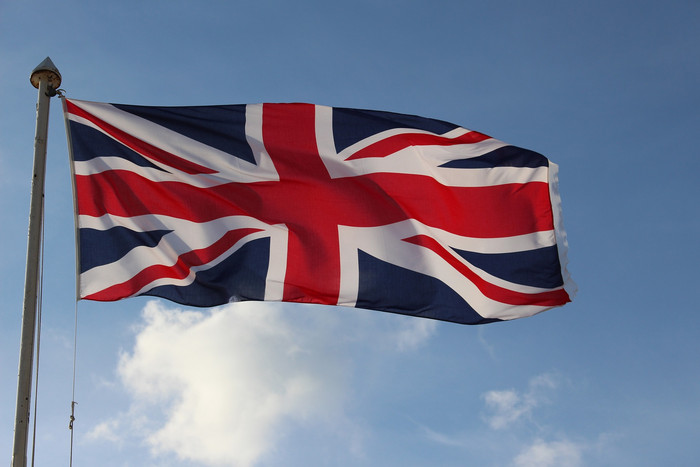
All weather racing in Britain has long been considered as inferior to racing on the turf. The prize funds and prestige of racing on synthetic surfaces took years to be steadily built up but eventually bigger trainers and owners started waking up to the importance and opportunities of the all-weather.
We now regularly see future stars of the turf given their first outings on one of the six all-weather tracks in operation in Britain. Moreover, stars of the Flat racing season no longer have to be wrapped up in cotton wool over the winter months. The introduction of the All-Weather Championships have taken things to a whole new level and suggest that all weather racing is only on the up and up.
Due to the increasingly unpredictable British (and Irish) weather, one of the major benefits of all-weather racing is set to become even more important. Many meetings and much money is lost due to turf courses being frozen or waterlogged and this is very rarely an issue for all-weather circuits. In addition, wear and tear is limited on all-weather tracks and so a venue can hold more meetings than a turf course, once again boosting the profitability for the course.
The Six British Synthetic Tracks
| Course | Surface | Years |
|---|---|---|
| Lingfield Park | Equitrack | 1989 – 2001 |
| Polytrack | 2001 – Present | |
| Southwell | Fibresand | 1989 – 2021 |
| Tapeta | 2021 onwards | |
| Wolverhampton | Fibresand | 1994 – 2004 |
| Polytrack | 2004 – 2014 | |
| Tapeta | 2014 – Present | |
| Kempton Park | Polytrack | 2006 – Present |
| Chelmsford City/Great Leighs | Polytrack | 2008 – Present |
| Newcastle | Tapeta | 2016 – Present |
Lingfield Park was the first British racecourse to host an all-weather meeting when the new synthetic course at the Surrey Park opened for competition in 1989. It has been a long road for the track, which features a Polytrack surface, to the point where it is now many people’s favourite all-weather course and the host of the finals day of the All-Weather Championships.
Kempton, however, is the most versatile racecourse in Britain. It hosts racing all year round with a National Hunt course which is divided into chase and hurdles courses and the Polytrack all-weather track which was opened in March 2006.
Chelmsford City, the UK’s newest course is the only other Polytrack venue in Britain. The course had a troubled history and was forced to close for a number of years but it now plays an important role in the all-weather scene and hosts a huge number of fixtures.
The all-weather tracks at Wolverhampton and Newcastle have both made significant investment in this form of racing. Wolverhampton was the first racecourse in Britain to be floodlit, opening up a whole new type of racing while Newcastle made the bold decision to replace their Flat turf course with a Tapeta all-weather surface in 2013. Wolverhampton also uses Tapeta, which it switched to from Polytrack in 2014 as the operators wanted a better and more versatile surface.
All-Weather Championships
Arena Racing Company are one of the biggest operators of racetracks in British racing. They were big early supporters of all-weather racing but decided that they needed to do something special to really give it a shot in the arm. Thus the All-Weather Championships were born and have really raised the profile of this type of racing.
Culminating in Finals Day at Lingfield on Good Friday, the All-Weather Championships are made up of 200 meetings held across the six all-weather tracks in Britain. Scattered throughout these meetings are Fast Track Qualifiers. Like the races on finals day, these qualifiers are divided into different sections with victory in any of them guaranteeing a horse a place in the corresponding race on Finals Day. The remaining places in the Finals Day races are decided by the Official Ratings but horses must have at least three all-weather runs in Britain, Ireland or France between 22 October and the six-day entry stage for Finals Day.
Finals Day itself is up there with the most lucrative days of racing of the whole season. There is £1 million in prize money up for grabs spread across the six categories – 3 Year Olds, Fillies and Mares, Sprint, Marathon, Mile and Middle Distance.
| Race | Distance | Prize Fund |
|---|---|---|
| Marathon Championships | 2m | £150,000 |
| Fillies’ & Mares’ Championships | 7f | £150,000 |
| Sprint Championships | 6f | £150,000 |
| 3 Year Old Championships | 6f | £150,000 |
| Middle Distance Championships | 1m 2f | £150,000 |
| Mile Championships | 1m | £150,000 |
It is fair to say that the introduction of the All-Weather Championships has done exactly what Arena Racing had hoped for. It sees some genuine stars of the Flat remain in training when others are resting up at home and has greatly increased the prestige of all-weather racing in Britain.
Dirt
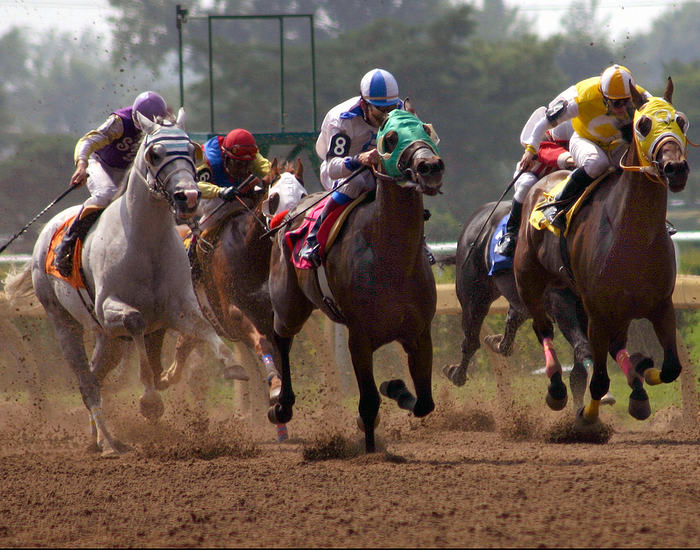
If you have ever watched one of the big meetings in American horse racing such as the Kentucky Derby or the Breeders’ Cup you will understand just how important dirt racing is in the USA. Racing on the dirt is also popular in many other parts of the world, notably Japan and the Middle East and in general in drier countries.
Like turf tracks, dirt tracks are natural but there are significant differences between the two surfaces.
The Fastest Surface
![]() From a racing perspective, the main thing to know about dirt tracks is that they are fast. Of course the speed of the track will depend on the weather, with dry tracks running considerably faster than wet tracks which are either described as muddy or sloppy. In practice though, dirt tracks tend to drain very quickly, so most of the racing is done with an official going of dry or moist, both of which promote fast speeds.
From a racing perspective, the main thing to know about dirt tracks is that they are fast. Of course the speed of the track will depend on the weather, with dry tracks running considerably faster than wet tracks which are either described as muddy or sloppy. In practice though, dirt tracks tend to drain very quickly, so most of the racing is done with an official going of dry or moist, both of which promote fast speeds.
In addition to generally being drier than turf courses, the absence of grass reduces the chances of horses slipping on the surface. This further promotes fast times.
Less Forgiving Than Turf
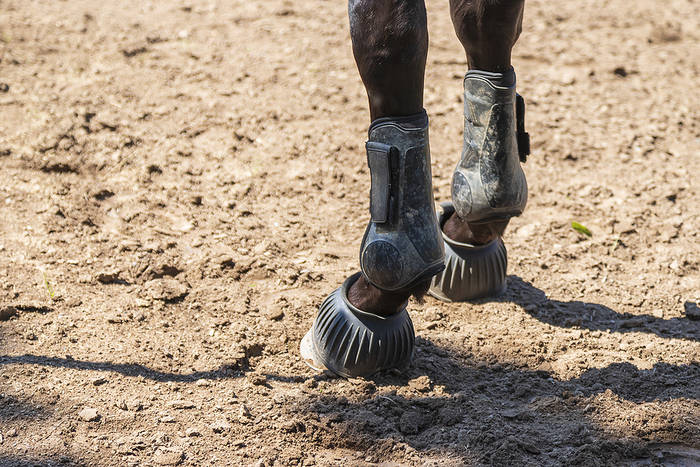
While fast dirt tracks produce some thrilling racing, the main drawback is that the firmer surfaces can be pretty tough on horses’ legs. Horses who travel to the USA to compete in big races will often not enjoy making the switch from turf to grass for precisely this reason and injuries often result.
Moreover, when horses are returning from injury it is common practice for American trainers to give them a run on a turf course before the dirt. The extra give in turf is easier on the horse’s ligaments and joints and allows them to ease their way back into action.
Fast Starts Crucial
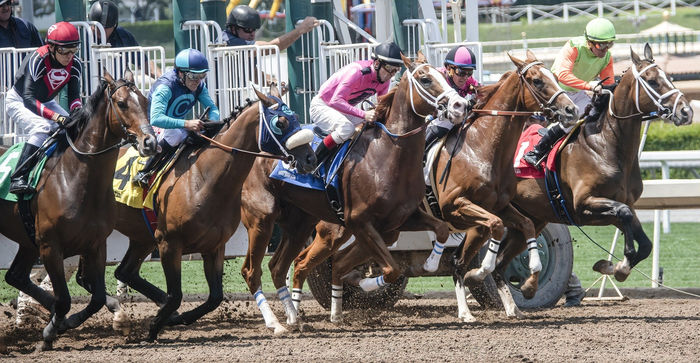
Another reason that European or Australian horses sometimes struggle when racing in the USA or Middle East is that they aren’t used to dealing with kickback. Kickback is when the top layer of the surface becomes dislodged by a horse and flung backwards into the horses behind.
This problem is exacerbated by the difference in tactics employed in different parts of the world. As we’ve seen, the pace of turf races usually increases as they go on. In America, horses are trained to burst out of the starting stalls significantly faster. This gives them the dual advantage of a prominent track position and of avoiding kickback. European horses, who are used to starting slower before building into the races therefore often find themselves at a disadvantage.
Safety Concerns an Ongoing Issue
![]() Trainers and jockeys spend a lot of time working out how to master different types of surfaces to win races. Performance, however, is second to the safety and welfare of horses and jockeys. Horseracing is an inherently risky sport but in recent years some dirt tracks in America have developed reputations for being particularly risky.
Trainers and jockeys spend a lot of time working out how to master different types of surfaces to win races. Performance, however, is second to the safety and welfare of horses and jockeys. Horseracing is an inherently risky sport but in recent years some dirt tracks in America have developed reputations for being particularly risky.
The Southern California racetrack Santa Anita has been at the eye of a few storms regarding safety concerns. Although it is a complex story involving the use of the drug Lasix among other factors, it was clear that Santa Anita and other courses had a problem when the dirt tracks became wet. Concerns about the drainage system at the track not working well enough prompted a discussion about whether Santa Anita and other courses in South California should be permanently replaced with synthetic alternatives as the climate is so changeable.
A Cultural Difference

America is a relatively young country and as such has imported many elements of its culture from elsewhere and then added a distinctly American feel to them. This is the case with horseracing, which was imported as ‘the sport of kings’ from Britain and turned into a sport for everybody in America.
The use of dirt tracks has a big role to play in this. It takes an awful lot of resources to install and maintain a turf course. Those costs are much smaller for dirt tracks. That allowed racecourses to crop up across America even in areas which typically have very little rainfall.
There is no monarchy in America and therefore no sport of kings. Dirt tracks helped democratise the sport in the USA and get rid of the elitism that is still sometimes prevalent in British racing. It’s a different situation in other countries who race on the dirt such as the UAE or Saudi Arabia where the draw of racing is as much about prestige as anything and the use of dirt tracks is largely mandated by the climate.
